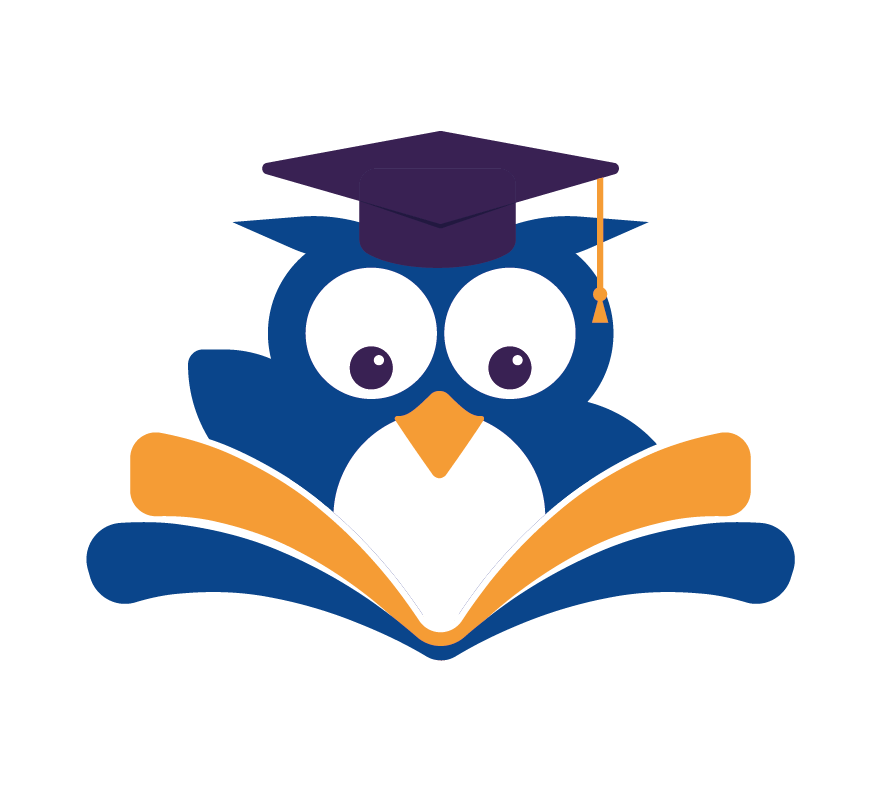Ever wondered why some people learn so easily, while others find it hard? The answer is metacognition. It’s a powerful tool that can really boost your learning.
Knowing how your brain works can make you a better learner. By understanding your own learning habits, you can pick the best methods for you. This way, you can learn more effectively.
In this guide, you’ll learn how to use metacognition to reach your learning goals. By the end, you’ll be more confident and skilled in learning.
Key Takeaways
- Understand the concept of metacognition and its role in learning
- Develop self-awareness of your learning techniques
- Improve your learning outcomes with effective metacognitive strategies
- Become a more confident and capable learner
- Apply metacognitive techniques to achieve your learning goals
The Science of Metacognition: What It Is and Why It Matters
Learning about metacognition can change how we learn and solve problems. It’s about knowing and controlling our own thinking. This means planning, checking, and judging our learning to get better results.
The Definition and Core Components of Metacognitive Awareness
Metacognitive awareness lets us think about and manage our own thinking. It includes planning, setting goals and strategies; monitoring, tracking our progress; and evaluating, judging how well we’re learning.
John Flavell, a key researcher, said,
“Metacognition refers to one’s knowledge concerning one’s own cognitive processes or anything related to them.”
This shows how crucial it is to know how we think and learn.
How Metacognition Differs from Regular Thinking
Metacognition is different from regular thinking. Regular thinking deals with processing information. But metacognition is about thinking about our thinking. It helps us reflect, judge, and control our learning methods.
For example, regular thinking might solve a math problem. But metacognition helps us understand how we solved it and how to get better at solving problems.
The Neurological Basis of Metacognitive Processes
Studies show metacognition links to the prefrontal cortex. This part of the brain handles planning and decision-making. Knowing this can help us improve our metacognitive skills through practice and training.
| Metacognitive Process | Description | Example |
|---|---|---|
| Planning | Setting goals and strategies for learning | Creating a study plan for an exam |
| Monitoring | Tracking progress during learning | Checking off tasks as you complete them |
| Evaluating | Assessing the effectiveness of learning strategies | Reflecting on what worked and what didn’t after a study session |
The Proven Benefits of Developing Metacognitive Skills
Learning to think about our thinking can change how we learn and solve problems. It makes us better at planning and checking our learning. This way, we can learn more efficiently and solve problems more effectively.
Enhanced Learning Efficiency and Knowledge Retention
Metacognitive skills help us plan, check, and evaluate our learning. This makes learning faster and keeps knowledge longer.
Improved Problem-Solving and Critical Thinking Abilities
Metacognition lets us look at problems from many sides. This boosts our critical thinking and problem-solving skills.
Greater Self-Awareness and Emotional Intelligence
Practicing metacognition helps us understand ourselves better. We learn about our strengths, weaknesses, and how we feel. This is key for emotional intelligence.
Real-World Success Stories
Many people have seen the benefits of metacognitive skills. For example, students who use metacognition do better in school.
| Benefit | Description | Impact |
|---|---|---|
| Enhanced Learning Efficiency | Better planning and monitoring of learning | Improved academic performance |
| Improved Problem-Solving | Analyzing problems from multiple angles | More effective solutions |
| Greater Self-Awareness | Understanding strengths, weaknesses, and emotions | Enhanced emotional intelligence |
Assessing Your Current Metacognitive Abilities: A Self-Evaluation Guide
Knowing your metacognitive abilities is key for learning and growing. Metacognitive abilities help you think about and control your own thinking. By checking these abilities, you can find what to work on and get better at learning and thinking.
Recognizing Your Thinking Patterns and Habits
To check your metacognitive abilities, first notice your thinking patterns and habits. Think about how you learn, solve problems, and make choices. Ask yourself:
- Do you often get stuck on a problem or task?
- How do you start a new learning task or challenge?
- Do you have ways to get past obstacles or difficulties?
Identifying Your Metacognitive Strengths and Weaknesses
After understanding your thinking patterns and habits, find your metacognitive strengths and weaknesses. Think about these:
Key areas to evaluate:
- Planning and organizing
- Keeping track of your progress
- Evaluating your results
- Changing your learning strategies
The Metacognitive Awareness Inventory (MAI)
The Metacognitive Awareness Inventory (MAI) is a great tool for checking your metacognitive awareness. It’s a self-report tool that looks at your planning, monitoring, and evaluating skills.
Setting Realistic Goals for Metacognitive Development
After finding your metacognitive strengths and weaknesses, set realistic goals for improvement. Start with specific, reachable goals that focus on areas you want to get better at. For example, you might aim to:
- Get better at planning and organizing learning tasks
- Improve your monitoring skills to track your progress better
- Find more effective ways to evaluate your results
By following these steps and using tools like the MAI, you can understand your metacognitive abilities better. Then, you can work on improving them.
The Three Pillars of Metacognition: Planning, Monitoring, and Evaluating
Learning well depends on three key areas: planning, monitoring, and evaluating. These areas help us learn better and more efficiently.
Planning: Setting the Stage for Effective Learning
Planning is the first step in learning. It means setting goals and making learning plans. This helps us focus and use our time well.
Creating Effective Learning Plans
To make a good learning plan, we need to know what we want to learn. We should also look at what resources we have and plan how to reach our goals. This keeps us organized and motivated.
Monitoring: Tracking Your Progress in Real-Time
Monitoring means keeping track of how we’re doing as we learn. It’s about knowing our thoughts and changing our approach if needed.
Self-Questioning Techniques
Self-questioning is a great way to monitor our learning. Asking ourselves questions like “What am I trying to achieve?” helps us stay focused and make changes if needed.
Evaluating: Reflecting on Outcomes and Adjusting Strategies
Evaluating is the last step, where we look back at what we’ve learned and how we can improve next time.
The After-Action Review Method
The after-action review is a useful tool for evaluating. It helps us see what worked and what didn’t. Then, we can use this knowledge to improve our learning in the future.
| Pillar | Description | Technique |
|---|---|---|
| Planning | Setting the stage for effective learning | Creating Effective Learning Plans |
| Monitoring | Tracking progress in real-time | Self-Questioning Techniques |
| Evaluating | Reflecting on outcomes and adjusting strategies | The After-Action Review Method |
Practical Metacognitive Techniques for Everyday Learning
Let’s explore some easy metacognitive techniques to boost your learning. These methods are simple, effective, and fit into your daily life.
The Question Method: Interrogating Your Own Understanding
The question method is about asking yourself questions as you learn. You might ask, “What’s the main idea?” or “How does this relate to what I know?” This helps you see where you need more practice or review.
- Ask yourself questions like “What’s the key concept here?” or “How can I apply this?”
- Use these questions to guide your learning and adjust your approach as needed.
Think-Aloud Protocols: Verbalizing Your Thought Process
Think-aloud protocols mean talking out loud as you solve problems or learn new stuff. This helps you understand your thinking better and spot biases or areas for improvement.
“Thinking aloud can help you catch yourself when you’re about to make a mistake or when you’re stuck on a particular concept.” – Expert in Metacognitive Research
Concept Mapping: Visualizing Knowledge Connections
Concept mapping is a visual way to organize and connect new info to what you already know. It helps you grasp complex topics better and remember them more easily.
Reflective Journaling: Documenting Your Learning Journey
Reflective journaling is about writing down your learning experiences, successes, and challenges. It helps you reflect on your progress, find areas to improve, and adjust your learning strategies.
Templates for Effective Reflection
To make journaling easier, use templates like:
- What did I learn today?
- What challenges did I face, and how did I overcome them?
- What are my goals for the next learning session?
By using these metacognitive techniques daily, you’ll learn more effectively and confidently. Start with one or two and see how they change your learning!
Overcoming Common Metacognitive Obstacles and Pitfalls
Starting your metacognitive journey comes with challenges. It’s a personal and ongoing process. Knowing the obstacles can help you move forward.
Cognitive Biases That Hinder Metacognitive Development
Cognitive biases affect how we think and judge. In metacognition, biases like confirmation bias and the Dunning-Kruger effect can block your self-assessment. For example, confirmation bias might make you only look for information that supports your views.

Dealing with Negative Self-Talk and Limiting Beliefs
Negative self-talk and limiting beliefs can slow down your metacognitive growth. These thoughts can lower your confidence and make reflection harder. To fight this, it’s key to be kinder to yourself and challenge negative thoughts.
Strategies for Maintaining Metacognitive Practice During Stress
Stress can make it hard to keep up with metacognitive practices. It’s easy to fall back into old ways under pressure. But, there are ways to stay on track. Self-care, setting achievable goals, and using emergency metacognitive techniques can help.
Emergency Metacognitive Techniques
When stressed, simple metacognitive methods can be lifesavers. Quick reflection or breath-focused mindfulness can help you stay focused and keep up with your metacognitive practice.
| Technique | Description | Benefit |
|---|---|---|
| Quick Reflection | Take 2 minutes to reflect on your current task or situation. | Helps regain focus and clarity. |
| Breath-Focused Mindfulness | Practice deep, controlled breathing to calm your mind. | Reduces stress and improves concentration. |
Applying Metacognition in Academic Settings: Study Smarter, Not Harder
Students often hear to ‘study smarter, not harder.’ But what does it mean? It’s about using metacognition to make learning better. By using metacognitive strategies, you can do well in school without studying more.
Pre-Reading Strategies: Setting the Stage for Comprehension
Before starting a new chapter or topic, it’s key to prepare well. Look over the material, set goals, and use what you already know. For example, check headings and summaries to understand the content’s layout and main points.
Here’s a quote from educational psychologist
“The mind is not a vessel to be filled, but a fire to be kindled.” – Plutarch
. It shows how important it is to spark interest before studying.
Active Note-Taking Techniques That Engage Metacognitive Skills
Note-taking is more than just writing down information. It’s a way to engage your metacognitive skills. Methods like the Cornell Note-taking System or mind mapping help organize and review material better. This way, you’re not just reading; you’re analyzing and understanding the content.
Test Preparation: Using Metacognition to Predict and Prepare
Metacognition is key for test prep. It helps predict questions, find weak spots, and manage time well. Making practice quizzes or flashcards can also boost your knowledge and retention.
| Test Preparation Strategy | Metacognitive Skill |
|---|---|
| Predicting Exam Questions | Analyzing past exams, understanding teacher’s emphasis |
| Identifying Weak Areas | Self-assessment, recognizing knowledge gaps |
| Time Management | Planning study schedule, monitoring progress |
Post-Exam Analysis: Learning from Successes and Failures
Reflecting on your exam performance is vital. Think about what you did right and what you could improve. This helps you tweak your study methods for the next time.
By using these metacognitive strategies, you’ll not only get better grades. You’ll also learn more efficiently and effectively.
Digital Tools and Resources to Enhance Your Metacognitive Practice
In today’s digital world, many tools can boost your metacognitive skills. You can track your learning, connect with others, and get feedback to improve. This makes learning more effective and fun.
Apps and Software for Tracking Learning Progress
Many apps and software help you follow your learning path. Trello and Evernote let you organize tasks, set reminders, and see how far you’ve come. They can be tailored to your learning style, helping you reach your goals.

Online Communities for Metacognitive Development
Being part of online communities offers support and motivation. Sites like Reddit and Discord have groups for learning and improving metacognitive skills. They share learning tips and keep you motivated.
AI-Assisted Tools for Personalized Metacognitive Feedback
AI-assisted tools change learning with personalized feedback. Quizlet and Duolingo adjust to your learning speed and give instant feedback. This helps you see where to improve and change your learning plan.
Metacognition in the Workplace: Boosting Professional Performance
Being able to think about our thinking can change the game at work. By using metacognitive strategies, we can make better decisions, manage projects better, and keep growing.
Decision-Making: Using Metacognition to Weigh Options Effectively
Metacognition greatly affects how we make decisions. Knowing our thought patterns helps us avoid biases and make smarter choices. For example, taking a moment to think about our first thoughts can open up new views.
“The biggest risk is not taking any risk…” Mark Zuckerberg said, highlighting the need for careful decision-making (Forbes). Metacognition helps us better understand risks.
Project Management: Metacognitive Approaches to Planning and Execution
In project management, metacognition aids in planning, tracking, and checking progress. Reflecting on our strategies regularly lets us spot and fix problems early.
- Setting clear goals and milestones
- Regularly assessing progress
- Adjusting strategies based on feedback
Continuous Improvement: Applying Reflective Practice to Career Growth
Improvement is crucial for career growth. Metacognition lets us reflect on our experiences, learn from them, and use that knowledge for future challenges.
The 5-Minute Daily Workplace Reflection
A simple yet powerful metacognitive practice is the 5-minute daily reflection. Spend a few minutes each day asking yourself:
- What did I accomplish today?
- What challenges did I face?
- How can I improve tomorrow?
This habit encourages a culture of ongoing improvement and keeps professionals on track with their goals.
Conclusion: Embracing Metacognition as a Lifelong Practice
Metacognition is a powerful tool that changes how you learn and tackle challenges. It makes you a more efficient learner and a better problem-solver. It also helps you understand yourself better.
To make metacognition a part of your life, start using the techniques we’ve talked about every day. It doesn’t matter if you’re a student or a professional. Metacognition can help you achieve your goals and reach your full potential.
Remember, becoming good at metacognition takes time and practice. Be patient with yourself and don’t be afraid to try new things. With consistent effort, metacognition will become a natural part of your learning and growth.
By embracing metacognition, you’ll be ready for the changing world. You’ll be more adaptable, resilient, and confident in your ability to learn and grow.

